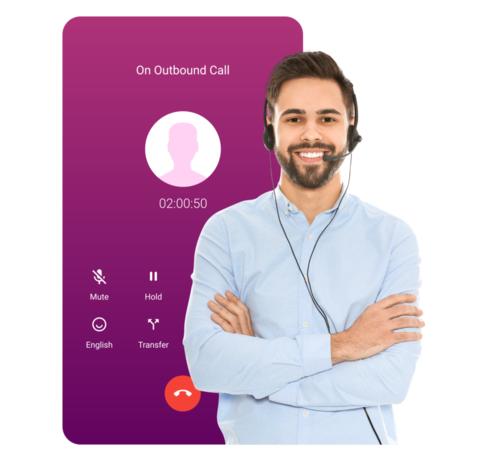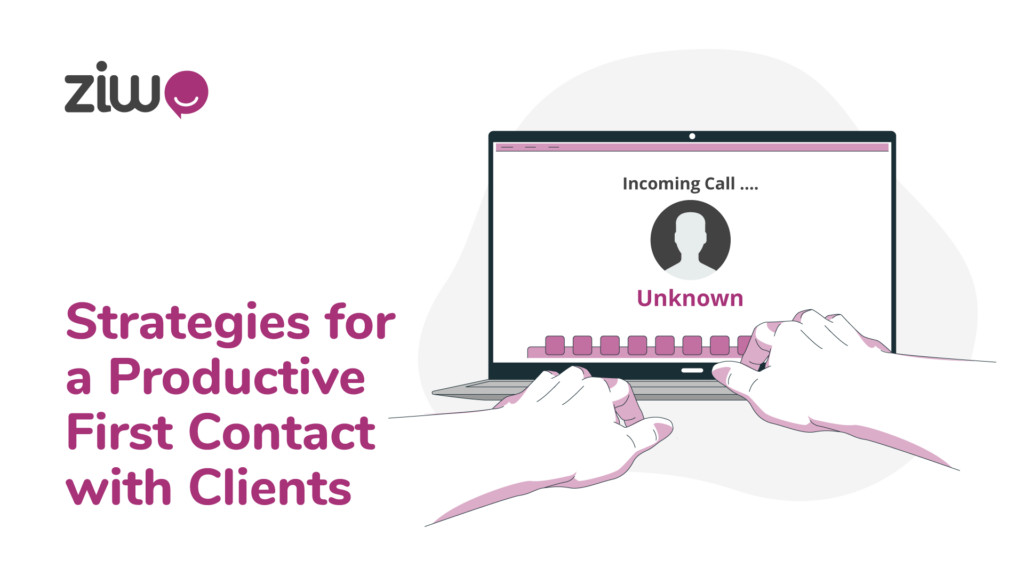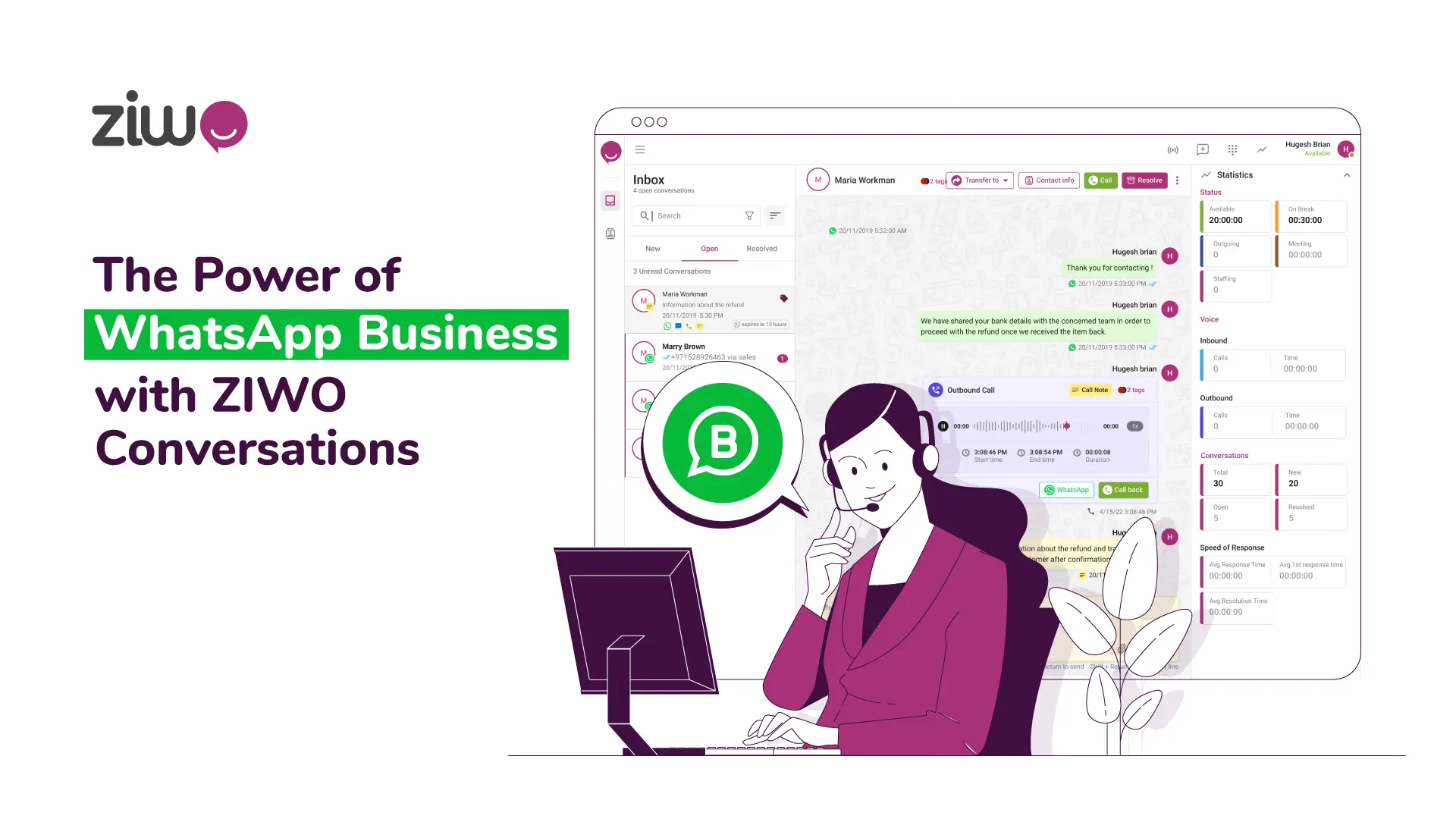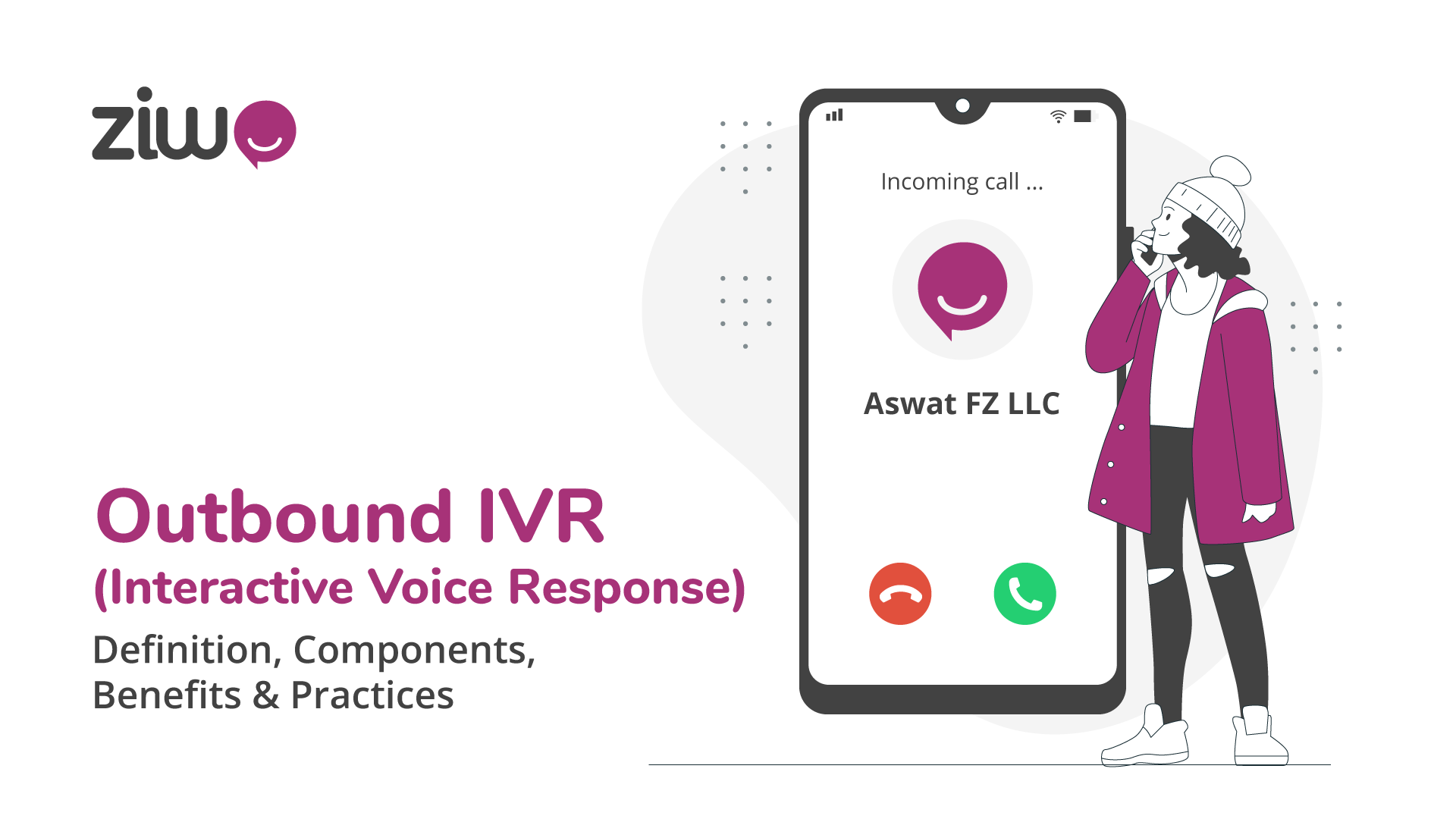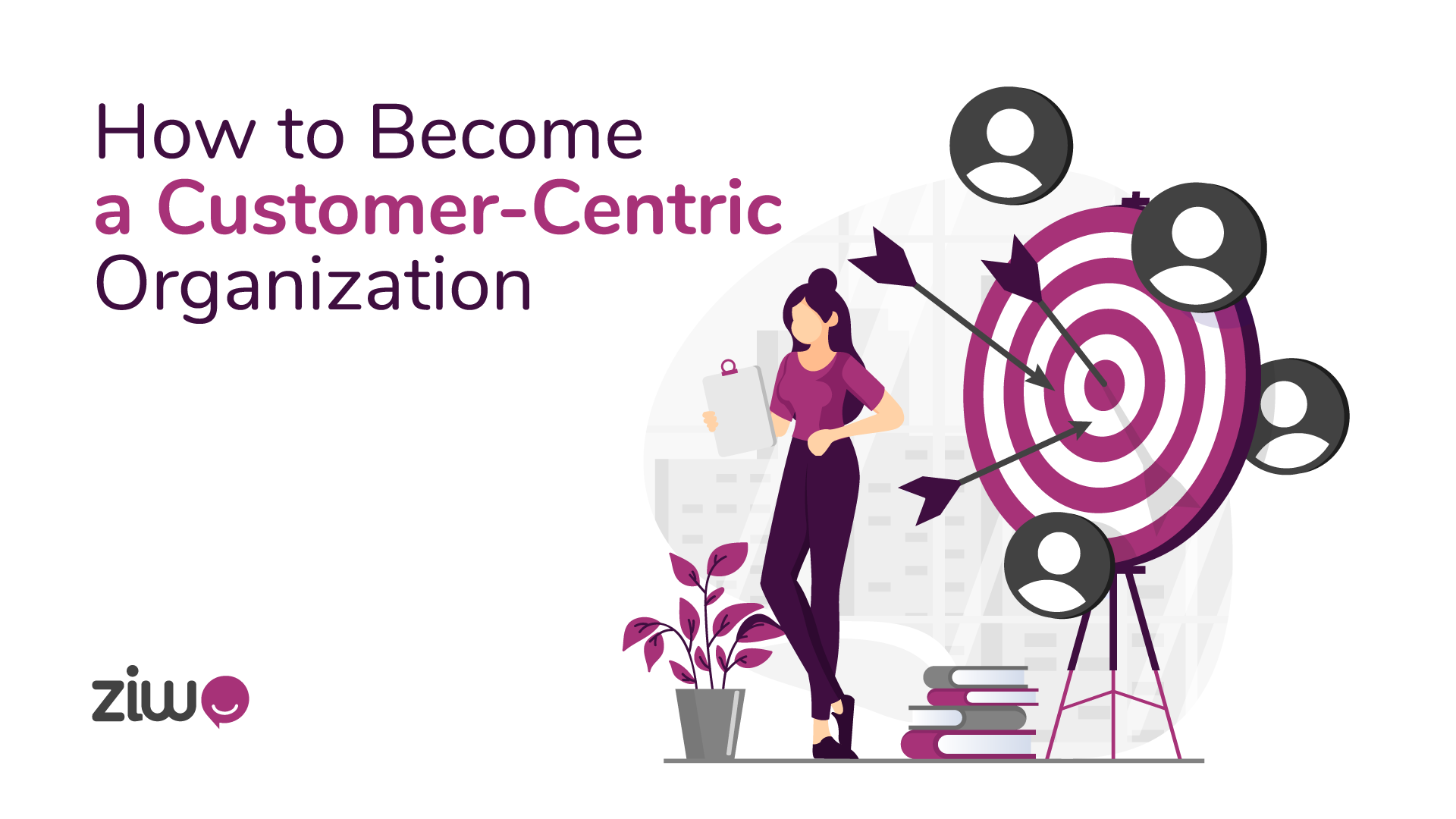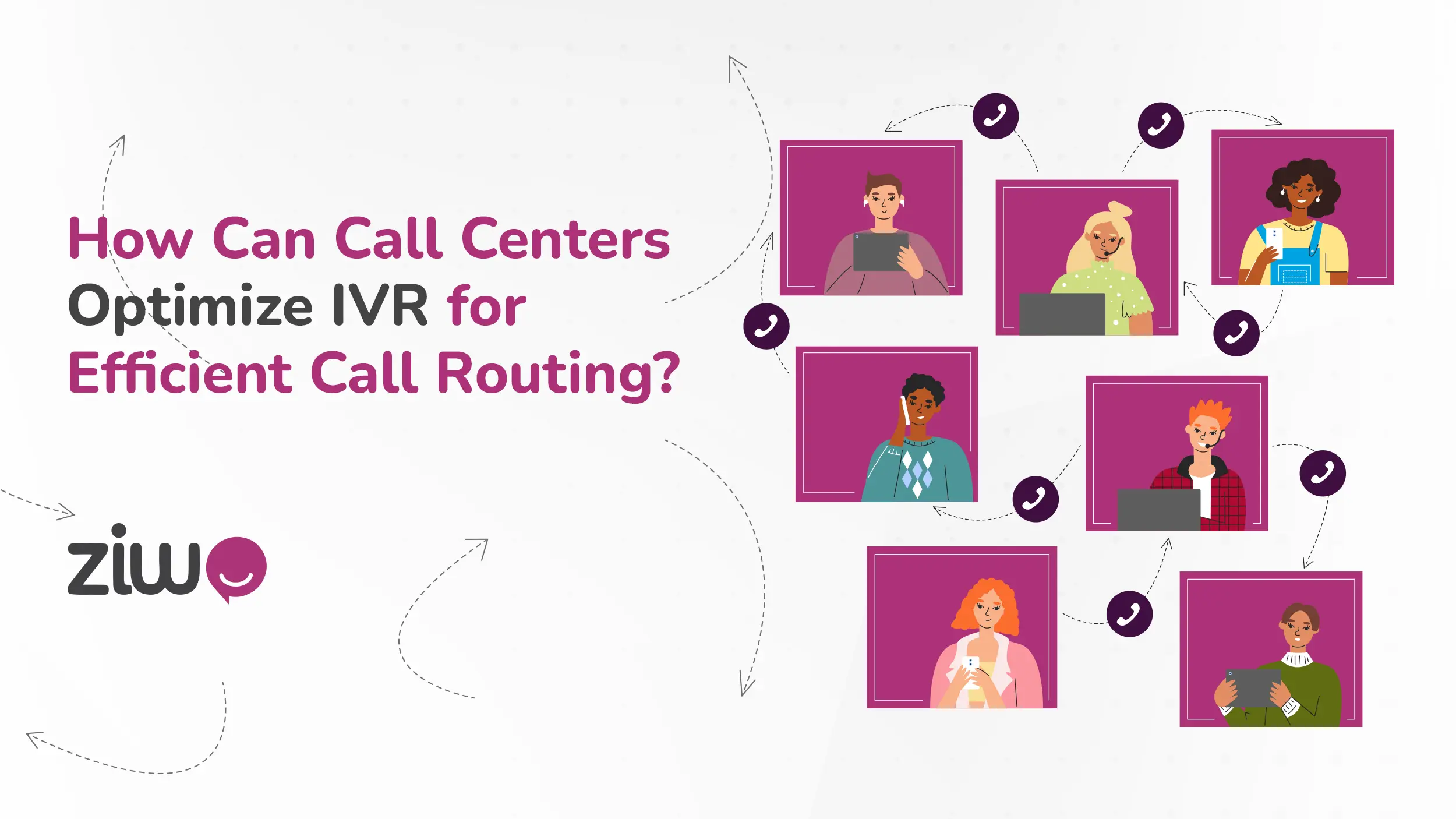
How Can Call Centers Optimize IVR for Efficient Call Routing?
Need to increase your customers’ purchasing rate by more than 50%?
This could happen quickly if you optimize one element at your cloud call center, IVR!
How can you optimize the IVR call center and lead to efficient call routing?
Improving IVR call routing reduces wait time to much less than before, which protects customers from frustration and dullness.
In this article, you will learn how to apply the proven strategies that turnIVR into a customer satisfaction machine. Read the article till the end to know the best practices that help callers get their calls routed perfectly and how call routing is a crucial part of providing a personalized customer experience.
The Importance of Efficient Call Routing in Call Centers
IVR call routing is crucial for optimizing customer experience with call centers by determining the best route for completing requests. It significantly enhances customer satisfaction and leaves a lasting impression on clients. Efficient call routing quickly establishes a positive relationship with the business, ensuring the customer feels they have dealt with the right business and wants to retain this relationship. So, we can summarize the effect of well-working call routing as follows:
1- Wait Time Reduction
Call queuing and routing help customers connect immediately whenever the right agent is available. This will reflect on the waiting time.
2- High-Resolution Rates
When the agents receive the calls faster, customer issues will be resolved faster. This makes the resolution rate become higher than before.
3- Better Customer Experience
Connecting the customer to the most skilled agent, who would surely be more aware of the problem and have sufficient knowledge, makes the whole experience exceed expectations.
4- Abandonment Rate Reduction
How many customers leave the call before they complete the whole process? Regardless of your contact center's current rate, it will decrease as the optimum call routing shortens the process.
5- Increased Productivity
As the waiting time decreases, instead of helping two customers in 30 minutes, the number of customers served could be doubled or tripled.
Understanding the Basics of IVR Technology
IVR is an automated telephony system that uses pre-recorded messages to interact with customers, providing greetings, instructions, and service options. It can use dual-tone multi-frequency technology, voice recognition, or both.
How IVR Systems Work
IVR integrates physical telephones with voice-over-internet protocols to direct customers to appropriate departments, live agents, or efficient databases, using automated preset menus based on customer queries and needs, involving eight technological elements.
1- DTMF
Have you ever wondered how the customer transfers from one list to another? Dual-tone multi-frequency is responsible for that. Once the customer presses the button on his smartphone keypad and hears the beep sound, the IVR system receives a signal from the DTMF to transfer him to a new menu.
2- Voice Recognition
Speaking to the IVR system is possible if voice recognition technology exists. Here, the customer doesn’t press buttons but speaks up about his needs. Thanks to voice recognition, the phrases the customer pronounces turn into commands the IVR system interacts with. For example, the customer says “Two” to reach out the customer support and “One” for sales.
3- Natural Language Processing (NLP)
Voice recognition technology converts voice into understood commands, allowing the IVR system to interact without requiring customers to pronounce specific words. This allows for personalized responses from agents, such as routing calls to sales departments within a queue, allowing for efficient communication.
4- Machine Learning
Machine learning, a subset of AI, aids IVR systems in understanding customer needs and responding to spoken language. It analyzes data, learns from experiences, and collects results, making it unique and enhancing tasks through repetition.
5- TTS
The recorded voice a customer hears during the call is unnecessary to be humane. A test-to-speech system can turn the text menu your company wrote for the IVR into spoken words the customer can understand. In this case, the computer’s role is to recite the text to the customer.
6- VXML
The Voice eXtensible Markup is a programming language that allows the customer to receive the data he needs in a voice format. This makes VXML a common language that supports spoken input, telephone keypad input, recording of spoken input, TTS, and other features.
7- TCP/IP
Transmission Control Protocol/Internet Protocol is a group of standardized rules that allow computers to communicate with each other on a network which is the Internet. TCP ensures the accuracy and the quality of data packets transferred between two servers or computers. So, TCP /IP is considered the basis of VOIP technology.
8- Call Flow
An IVR call flow is a customer's journey to achieve their goal. For example, your customer’s path to buying or inquiring about an iPhone 13 price will be as follows:
For Sales, Press 1 > For Mobile Phones, Press 1 > For Brand iPhone, Press 1 > An agent picks up the call.
The Role of IVR in Call Routing
Efficient call routing relies on a well-designed IVR system that creates personalized customer experiences from the first call. This system ensures businesses interact with customers, providing greetings, prompts, and menu options that express their needs.
Strategies for Optimizing IVR for Call Routing
You can use numerous strategies to develop highly-performing IVR call routing. You can choose one strategy or use multiple ones, and they include:
1—Direct Routing: This strategy involves routing the customer directly to the department or service requested. It reaches the customer at the first available agent.
2—Skills-Based Routing:This is another strategy that deals with customers in a more detailed way. Here, the IVR delivers multiple options in each menu, and based on the customer’s choices, the skills needed to solve the problem become more apparent. So, the call is routed to the agent who has those skills.
3—Intelligent Data-led Routing:Marketing omnichannel strategies and CRM integration with IVR systems allow gathering data from all channels to serve the other components of the contact center. Based on the customer’s preferences, purchase history, and previous activities, the IVR system routes the call to the right agent who can help.
4—Time-Based Routing:Time-based routing regards time as an important factor for customer and agent. As time could differ according to the zone of the customer and agent, the available agent is in a time zone that allows him to respond.
5—Location-Based Routing:For businesses with branches worldwide, location-based routing will help customers find the information they need about the nearest branch.
6—Self Service Routing: Self-service routing is an excellent choice for an IVR system. According to a survey, more than 38% of customers from millennials and Gen Z generations will drop out of a call if they don’t end up with a self-service route1 .
Designing Intuitive IVR Menus
A well-designed menu significantly affects the customer. It streamlines the customer experience and guarantees a quick and correct routing process. This delivers an incredible customer experience, from the greeting to the required service, whether self-service or an agent's delivery.
Implementing Dynamic Call Routing With IVR
What could be the core components of a Dynamic IVR Call routing? It mainly consists of 4 elements:
1- AI Powered Speech Recognition
The IVR system uses natural language processing to identify the best call routing options, allowing the caller’s intent to be recognized from the first minute, thereby simplifying the navigation process and limiting the possibilities of traditional IVR.
2- Caller Identification
Dynamic call routing uses caller identification to identify the caller's phone number, allowing faster service based on previous orders, selected options, and past activities. This feature reduces time and provides quick service, but it doesn't prevent adding the 'How can I help you?' option for new requests.
3- Integrating the Omnichannel Experience
Integrating an omnichannel experience with a dynamic call routing system allows agents and customers to communicate seamlessly, reducing the need for repeated requests or issues and enabling agents to assist even if they are not the first contact.
4- Managerial Interaction
A call routing system should not be entirely efficient due to human error. Regularly checking recorded calls helps managers and team leaders improve the system. Call whispering features assist managers in addressing inefficiency issues faced by agents.
Leveraging Data Analytics for IVR Optimization
IVR data analytics are crucial for three main reasons:
1- Determining the callers’ behavior and interaction with the menus and prompts.
2- Evaluating the customer experience and the success rates that accompany IVR current script.
3- Assess the agents’ performance and ensure they put effort into the process.
Analyzing Call Data for IVR Improvements
The data analytics that IVR provides support call routing to the most suitable agents, departments, customer preferences, and locations. Based on analyzed data, the process becomes more reliable. The areas of continuous improvement in IVR are reflected on the following results:
1- Better Customer Handling
Every customer who contacts your call center is now an opportunity to increase satisfaction rates. Analyzed data enables designing more effective, intuitive menus that are easy to navigate and allow the customer to achieve their goals. That’s why customer handling is considered from the first moment the system receives the call.
2- Drop-off Rate Reduction
Callers will continue the calls till the end as the analyzed data will determine the triggers that drive the customers to opt-out. Call data analysis defines the options that not even a single customer uses, so they are removed from the menu with confidence.
3- Developing Proactive Customer Service
Call data analytics and AI offer proactive customer services, providing them with knowledge bases, FAQs, and payment links before they notice their need, reducing friction and preventing everyday frustrations by addressing the most pressing issues.
Tailoring IVR Systems Based on Customer Feedback
How can I customize customer-centric IVR systems based on their feedback? That's a good question! Any customer feedback system that gathers information about what the consumer actually looks for focuses on three areas of interest: fast resolution, personalization, and consistency.
- Fast Resolution: All processes that facilitate resolving the customer's problem. This could be determining a delivery location, calling for a technician, etc. After the customer receives the service, he gets a survey call back that checks how fast the issue is resolved. Based on customer feedback, the IVR could be optimized for him more in the future.
- Personalization: IVR systems develop personalized experiences from the first moment. If the customer’s data is stored, the IVR can offer greetings mentioning the caller’s name. Also, voice biometric authentication technology offers contact center security, assuring customer identity. Thanks to omnichannel integration, feedback can be gathered via email.
- Consistency: Every customer has the right to feel cared for. So, explaining the issue only once is enough. The full overview of the customer, because of CRM and other application integration, allows the IVR to have every interaction and activity. So, IVR adapts itself according to customer feedback, which the user could submit through a link sent in a message.
Integrating IVR With Other Call Center Technologies
IVR has numerous applications that could be integrated. Each technology affects the customer experience and serves call routing efficiency. Whenever we mention integration, CRM and AI applications will definitely pop up in your head.
Enhancing CRM Integration With IVR
A synchronized data system also ensures a seamless experience for customers and agents. This helps agents in the same department know the reason for calling a customer. The agents become aware of every update that occurs to the customer profile. CRM integration also manages automated tasks according to the pre-set workflow.
Using AI and Machine Learning for More Innovative Dynamic IVR Routing
AI and machine learning have a significant role in system design optimization for higher operational efficiency and quality IVR call routing. For example, NLP (Natural Processing Language) interacts with the caller’s speech by sending voice prompts that are more humane.
Emotion recognition is part of the dynamic IVR routing to support the customer on a better emotional basis. Here, the system reacts with the customer’s mood swings to help him on all levels.
Best Practices for Testing and Updating IVR Systems
IVR design practices include numerous for testing and updating IVR systems could be briefed in the following tips:
1- Break down every test into tiers for easier and more accurate implementation.
2- Adopt automation to streamline the workflow and save your agents’ effort for complex issues.
3- Let app integration be part of the continuous improvement strategy.
4- Always put yourself in the customers’ shoes and try the upgrade to determine its efficiency.
Continuous Monitoring and Testing of IVR Performance
Automated IVR testing allows for easy monitoring of path line performance, identifying inefficiencies and dysfunctions early. Call analytics, including volume, duration, abandonment rate, first call resolution rate, and customer satisfaction, guide decisions and improve customer experience.
Regular Updates and Feedback Implementation for the IVR Calling System
Committing to regular updates benefits any call center that aims to leave a mark on customers. These updates could involve many resources, but the customer still represents the highest priority. As we previously mentioned, there are many ways to gather feedback.
Conclusion: The Future of IVR in Call Center Call Routing
IVR Call routing technology aids customers in finding suitable destinations based on verbal input, keypad buttons, or previous activities. The future of IVR call routing will see advancements in AI, NLP, ML, and other tech gadgets.
Bibliographical references
1 – Adapting to customer service preferences of Gen Z and Millennials:
¹ Gartner (2023). Adapting to the Customer Service Preferences of Gen Z and Millennials. Available at: https://www.gartner.com/en/newsroom/press-releases/2023-10-30-adapting-to-the-customer-service-preferences-of-gen-z-and-millennials
